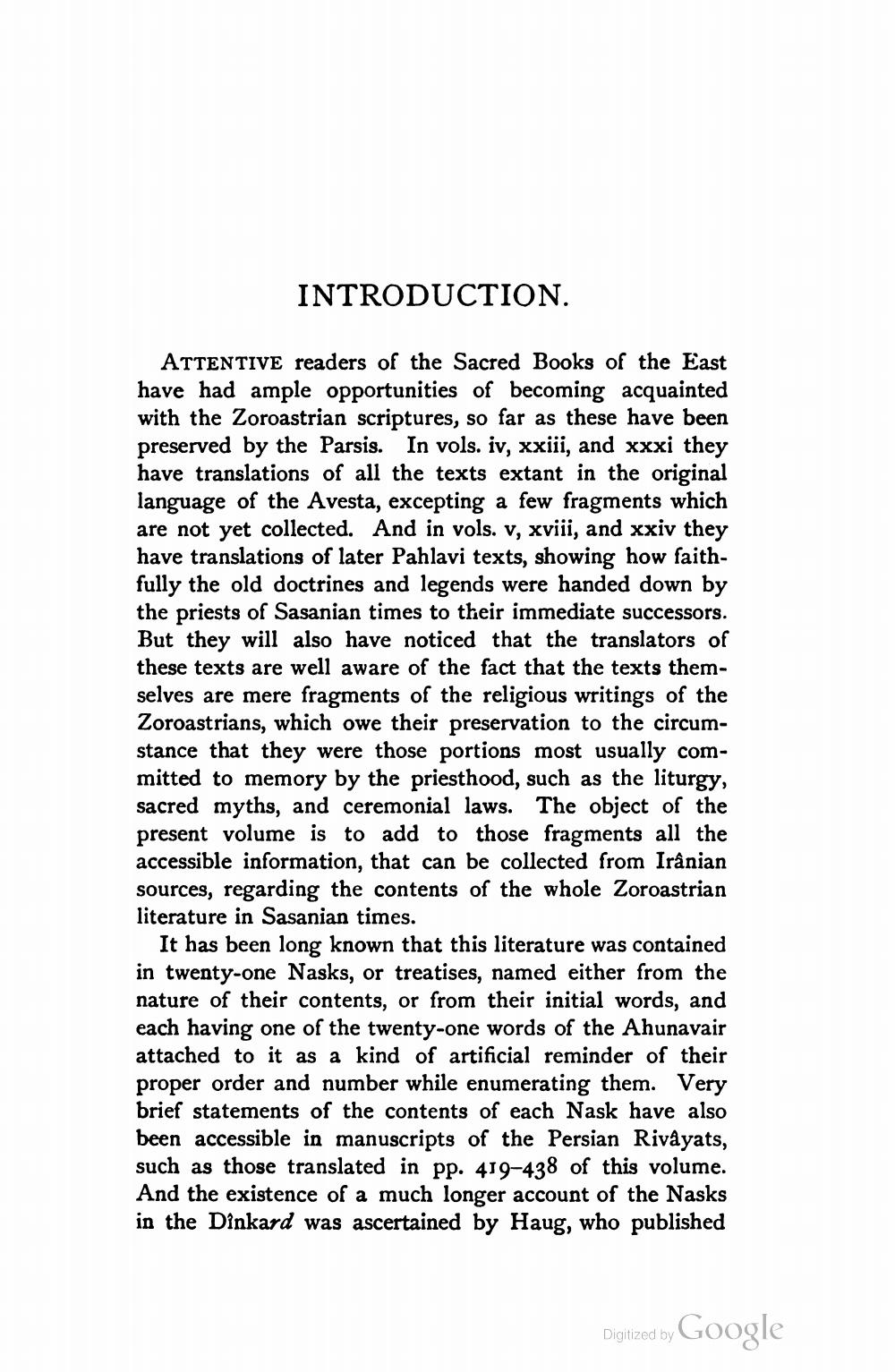________________
INTRODUCTION.
ATTENTIVE readers of the Sacred Books of the East have had ample opportunities of becoming acquainted with the Zoroastrian scriptures, so far as these have been preserved by the Parsis. In vols. iv, xxiii, and xxxi they have translations of all the texts extant in the original language of the Avesta, excepting a few fragments which are not yet collected. And in vols. v, xviii, and xxiv they have translations of later Pahlavi texts, showing how faithfully the old doctrines and legends were handed down by the priests of Sasanian times to their immediate successors. But they will also have noticed that the translators of these texts are well aware of the fact that the texts themselves are mere fragments of the religious writings of the Zoroastrians, which owe their preservation to the circumstance that they were those portions most usually committed to memory by the priesthood, such as the liturgy, sacred myths, and ceremonial laws. The object of the present volume is to add to those fragments all the accessible information, that can be collected from Iranian sources, regarding the contents of the whole Zoroastrian literature in Sasanian times.
It has been long known that this literature was contained in twenty-one Nasks, or treatises, named either from the nature of their contents, or from their initial words, and each having one of the twenty-one words of the Ahunavair attached to it as a kind of artificial reminder of their proper order and number while enumerating them. Very brief statements of the contents of each Nask have also been accessible in manuscripts of the Persian Rivayats, such as those translated in pp. 419-438 of this volume. And the existence of a much longer account of the Nasks in the Dinkard was ascertained by Haug, who published
Digitized by Google




